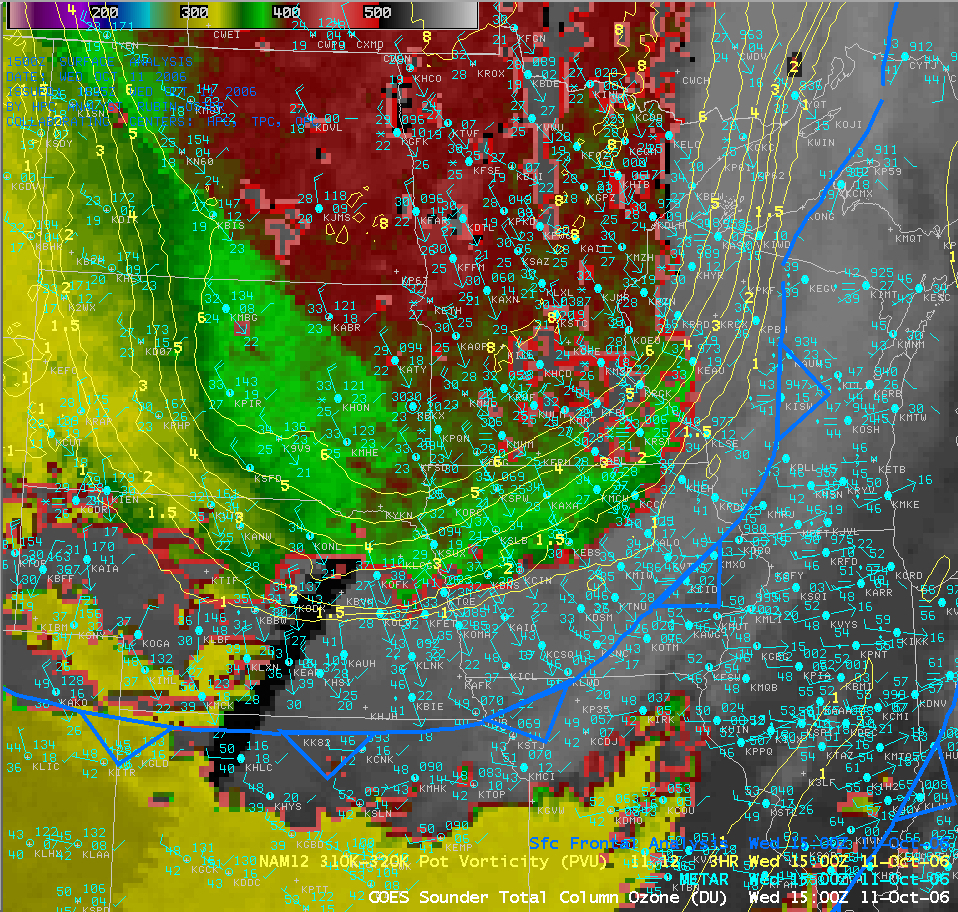GOES Sounder Total Column Ozone

A deep cold core upper-level low rapidly intensified over the northcentral US and southcentral Canada on 11 October — cold air in the wake of a strong southward-moving cold frontal boundary allowed many sites across the Upper Midwest and the western Great Lakes region to see their first snow of the season (13-22 inches fell in northern Wisconsin and the UP of Michigan, snow pellets were seen here in Madison area, and Detroit, Michigan experienced their earliest measurable snowfall on record); this system later gave Buffalo, New York it’s snowiest October day ever (14.0 inches on 13 October). The AWIPS image of GOES sounder total column ozone (above) shows a lobe of elevated ozone (350 Dobson Units or higher, green to red enhancement) which was moving southward across the Dakotas, Minnesota, and Iowa (QuickTime animation). This upper-tropospheric ozone feature corresponded with the lowering tropopause heights (denoted by the potential vorticity contours greater than ~2.0 PVU within the 310-320 K isentropic layer) associated with the core of the deepening 500 hPa vortex. Ozone and potential vorticity are both tracers of stratospheric air — high values in the upper troposphere are seen when tropopause heights drop (due to tropopause folding around jet streaks or upper-level frontogenesis, or deepening of upper-level cyclones).

